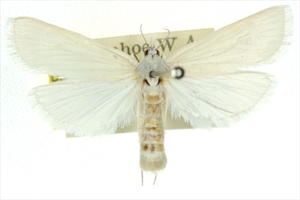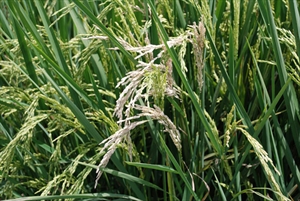- Restricted. Southeast Asia, Oceania. In Australia, Papua New Guinea.
- Severe on rice and wild rice if attack comes at flowering stage.
- Larvae tunnel between stem and leaf sheaths to the growing point, killing it; stems pull out easily (‘deadhearts’). Panicles fail to emergence, or emerge with white unfilled grain (‘whiteheads’).
- Eggs laid up to 100 near leaf tips, covered in hairs. Larvae white to yellowish when mature, 25 mm long. Pupae white. Adults white, wingspans 18-33 mm (males smaller than females). Nocturnal.
- Note, larvae go through resting period (diapause) for several months if conditions unfavourable. Where crops one a year and long-maturing, diapause means many moths emerge at one time.
- Natural enemies: many egg and larval parasitoids and predators.
- Biosecurity: introduction possible on produce contaminated with infested stems of host plants.
- Cultural control: plough land well (IMPORTANT to bury larvae/pupae of previous crop) and direct seed; cut tips of seedling to remove eggs; plant at higher density than normal; rotate, e.g., legumes; synchronise plantings with neighbours; submerge eggs by raising water occasionally; weed; apply split applications N; harvest at ground level to remove larvae; plough in stubble, unharvested plants and weeds; in irrigated rice-rice-fallow systems use medium (135-140 day) varieties so diapause is incomplete when time to replant.
- Chemical control: unlikely to be needed. Use abamectin. Avoid broad-spectrum insecticides to preserve natural enemies.







